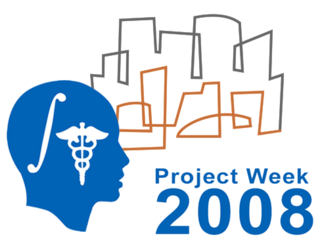Difference between revisions of "2008 Summer Project Week:DWI-DTI PrepTools"
From NAMIC Wiki
| Line 18: | Line 18: | ||
<h1>Objective</h1> | <h1>Objective</h1> | ||
| − | We are developing | + | We are developing a tool for preparing diffusion weighted and diffusion tensor image data. |
| + | |||
| + | |||
| Line 27: | Line 29: | ||
<h1>Approach, Plan</h1> | <h1>Approach, Plan</h1> | ||
| − | + | The tool will allow a "protocol" based execution via parameter files. The parameter files contain all the settings/preferences/options and this file can be created using the tool's GUI. This tool will handle the conversion of DICOM data to volumetric image formats (NRRD), perform automated quality control, correct data if possible, possibly reject parts of the data and provide a reporting facility. | |
| − | |||
</div> | </div> | ||
| Line 36: | Line 37: | ||
<h1>Progress</h1> | <h1>Progress</h1> | ||
| − | |||
</div> | </div> | ||
| Line 46: | Line 46: | ||
===References=== | ===References=== | ||
| − | |||
| − | |||
| − | |||
| − | |||
Revision as of 17:34, 12 June 2008
Home < 2008 Summer Project Week:DWI-DTI PrepTools Return to Project Week Main Page |
Key Investigators
- UNC: Heather Cody Hazlett, Martin Styner, Zhexing Liu
- Utah: Casey Goodlett, Guido Gerig, Tom Fletcher
Objective
We are developing a tool for preparing diffusion weighted and diffusion tensor image data.
Approach, Plan
The tool will allow a "protocol" based execution via parameter files. The parameter files contain all the settings/preferences/options and this file can be created using the tool's GUI. This tool will handle the conversion of DICOM data to volumetric image formats (NRRD), perform automated quality control, correct data if possible, possibly reject parts of the data and provide a reporting facility.
Progress